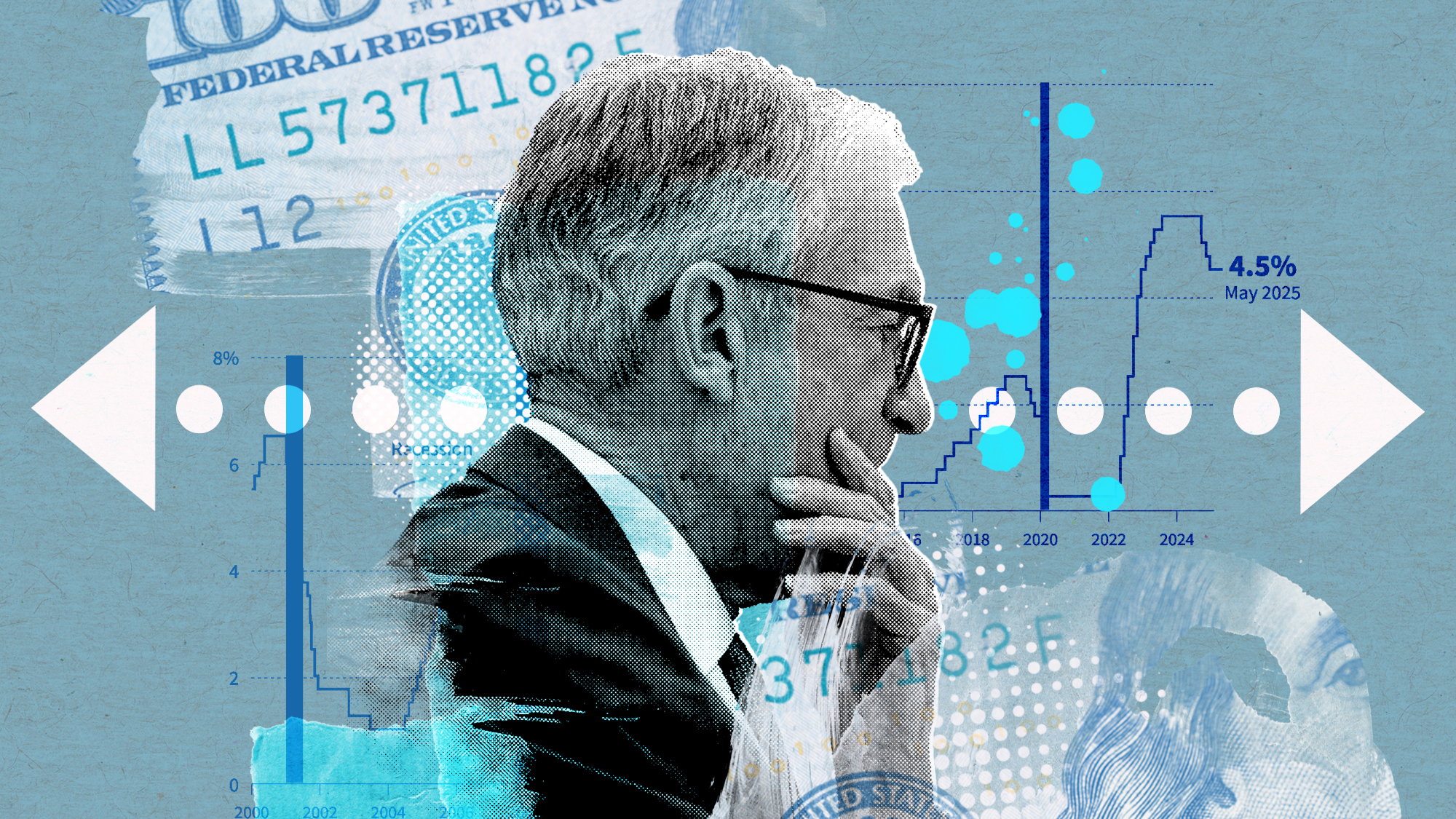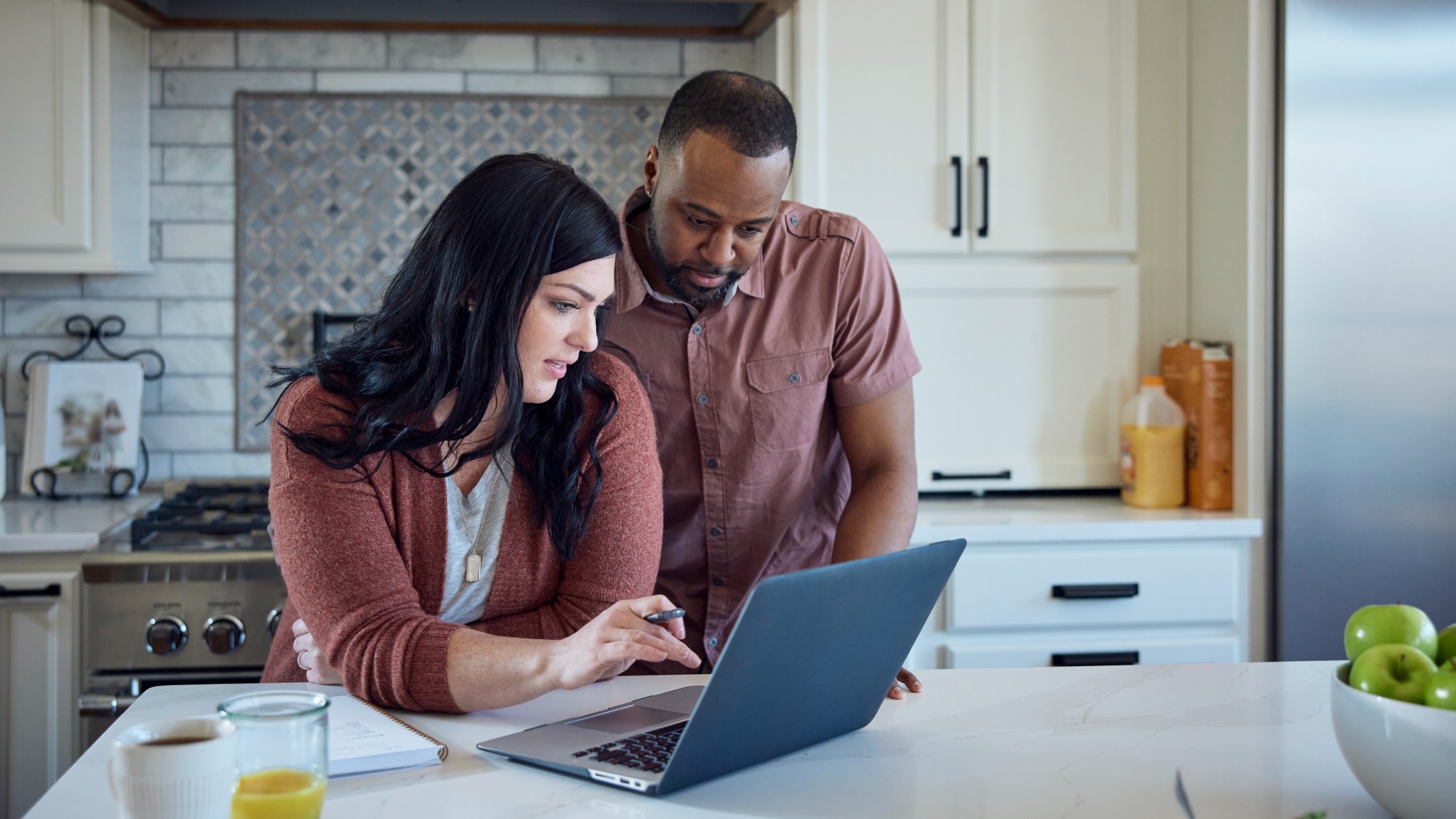What's next for US interest rates?
Two cuts, but TBD on a third


For the second consecutive time this year, the Federal Reserve slashed interest rates at its October meeting, bringing down the central bank's overnight borrowing rate to a range of 3.75%-4% — the lowest it’s been in three years. The decision came in the midst of a government shutdown — which has hampered the availability of guiding data — and out of divergent opinions from Fed officials, resulting in a 10-2 vote.
One of the dissents came from Fed Governor Stephen Miran, a Trump appointee who was in favor of a larger, half-point cut, while the other was from Kansas City Fed President Jeffrey Schmid, who wanted to leave rates unchanged. Notably, this marked the "first time since 2019 that there were dueling dissents," in a reflection of the "heated debate among officials over how President Donald Trump's sweeping policies on trade, immigration and spending are affecting the U.S. economy," said CNN Business.
What will the Fed do next?
While previously officials at the Federal Reserve predicted that there would be a third interest rate cut this year in December, that is now looking less certain. At a news conference following October's meeting, Federal Reserve Chair Jerome Powell shared that "there were 'strongly differing views about how to proceed in December' and that a cut was 'far from' a foregone conclusion," said The New York Times, quoting Powell.
The Week
Escape your echo chamber. Get the facts behind the news, plus analysis from multiple perspectives.

Sign up for The Week's Free Newsletters
From our morning news briefing to a weekly Good News Newsletter, get the best of The Week delivered directly to your inbox.
From our morning news briefing to a weekly Good News Newsletter, get the best of The Week delivered directly to your inbox.
At another point during the news conference, Powell "added that there is 'a growing chorus' among the 19 Fed officials to 'at least wait a cycle' before cutting again," said CNBC.
The Fed's disagreement around the right path forward is attributable to "not only divergent views surrounding the economic outlook but also divergent risk tolerances around allowing the labor market to weaken or inflation to stay elevated," said the Times. An essential factor at play is the continued government shutdown, which has left the Fed without updated data from the Bureau of Labor Statistics and other agencies tracking important points like the jobs market and consumer prices. Powell suggested that a "lack of official data as a result of the shutdown could potentially impact the Fed's decision in December, saying that 'if there is a high level of uncertainty, then that could be an argument in favor of caution about moving,'" said the Times.
Meanwhile, the Fed also continues to keep tabs on inflation, which continues to run above the central bank's 2% annual target. The Fed has, however, "concluded that the higher import tariffs imposed by the Trump administration would not lead to persistent inflation," said Reuters.
When is the next interest rate decision?
The Federal Reserve next meets Dec. 9-10. This will mark its final meeting of the year. Previously, a cut was forecasted by Fed officials, but Powell cast doubt on that prediction following the October meeting, after which "traders lowered odds for a December cut to 67% from 90%," said CNBC, citing the CME Group's FedWatch.
A free daily email with the biggest news stories of the day – and the best features from TheWeek.com
How do interest rates affect the economy?
The Fed uses interest rates to either stimulate or rein in economic activity. Generally, the theory is that "cutting rates decreases borrowing costs, prompting businesses to take out loans to hire more people and expand production," which "in turn, stimulates economic activity and growth," said Investopedia. "Conversely, when the economy is overheating, the Fed may raise rates to cool things down and prevent inflation from spiraling out of control."
What do rate changes mean for your wallet?
Beyond broader economic implications, the Federal Reserve's decisions also hold significance for your finances.
When rates are cut, that provides "some welcome relief for consumers who are in the market for a home or auto purchase, as well as for those carrying pricey credit card debt," said CBS News, by lowering interest rates on those products. On the other hand, rate cuts "could also have a downside of shaving the relatively high returns recently enjoyed by savers," said the outlet.
Meanwhile, when the Fed decides to raise rates, it usually has the inverse effect, in that it will typically lead interest rates on credit cards, auto loans and variable rate mortgages to go up. The good news with rate hikes, though, is that "savings accounts tend to earn more interest," said LendingTree.
Becca Stanek has worked as an editor and writer in the personal finance space since 2017. She previously served as a deputy editor and later a managing editor overseeing investing and savings content at LendingTree and as an editor at the financial startup SmartAsset, where she focused on retirement- and financial-adviser-related content. Before that, Becca was a staff writer at The Week, primarily contributing to Speed Reads.
-
 Pakistan: Trump’s ‘favourite field marshal’ takes charge
Pakistan: Trump’s ‘favourite field marshal’ takes chargeIn the Spotlight Asim Munir’s control over all three branches of Pakistan’s military gives him ‘sweeping powers’ – and almost unlimited freedom to use them
-
 Codeword: December 6, 2025
Codeword: December 6, 2025The daily codeword puzzle from The Week
-
 Crossword: December 6, 2025
Crossword: December 6, 2025The daily crossword from The Week
-
 How your household budget could look in 2026
How your household budget could look in 2026The Explainer The government is trying to balance the nation’s books but energy bills and the cost of food could impact your finances
-
 4 easy tips to avoid bank fees
4 easy tips to avoid bank feesThe Explainer A few dollars here and there might seem insignificant, but it all adds up
-
 What are the pros and cons of a Roth conversion for retirement?
What are the pros and cons of a Roth conversion for retirement?Pros and Cons By converting a traditional IRA to a Roth IRA, retirees can skip paying taxes on their withdrawals
-
 4 often overlooked home maintenance tasks that could cost you later
4 often overlooked home maintenance tasks that could cost you laterThe Explainer A little upkeep now can save you money down the road
-
 What are portable mortgages and how do they work?
What are portable mortgages and how do they work?the explainer Homeowners can transfer their old rates to a new property in the UK and Canada. The Trump administration is considering making it possible in the US.
-
 What’s the best way to use your year-end bonus?
What’s the best way to use your year-end bonus?the explainer Pay down debt, add it to an emergency fund or put it toward retirement
-
 How can you tell if you are ready to retire?
How can you tell if you are ready to retire?the explainer All the preparation you need to sail off into your golden years
-
 Can medical debt hurt your credit?
Can medical debt hurt your credit?The explainer The short answer is yes, though it depends on the credit scoring mode
